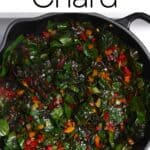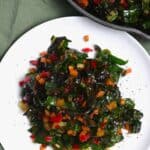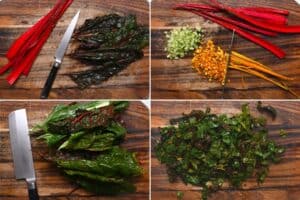This post may contain affiliate links. Please read our disclosure policy.
Turn one of the most underrated veggies into delicious sautéed swiss chard, packed with nutrients and plenty of color, perfect for integrating into your favorite salad or serving as a side.
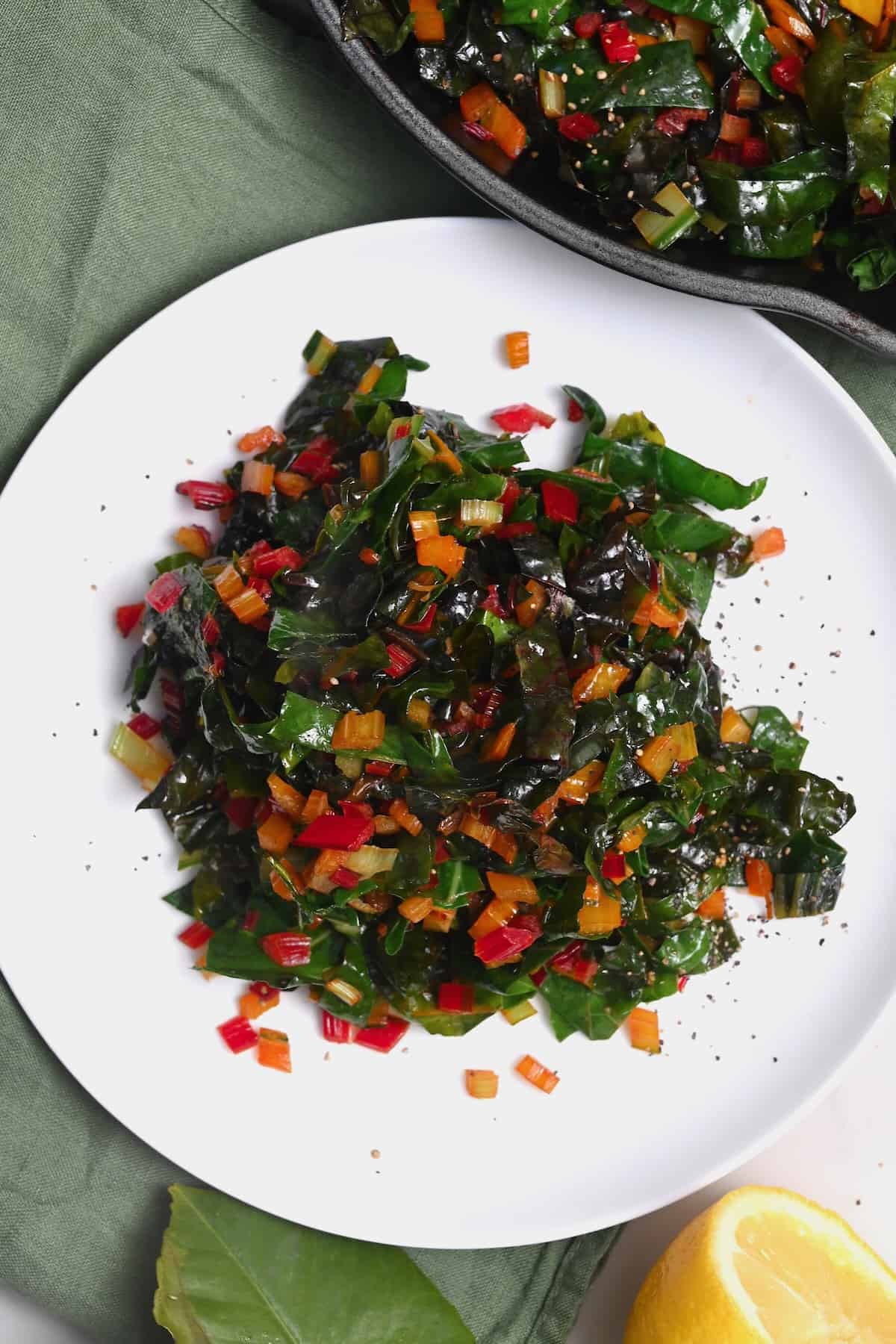
If you’re one of the many people for whom a sauteed Swiss chard recipe would make you quickly click over to something else – don’t abandon this one just yet. Sauteed chard is the simplest way to cook Swiss chard. It’s quick, easy, and still retains a lot of nutrition (plus, it tastes a lot better than raw).
Not only will I show you how to cook chard, but this easy Swiss chard recipe will show you how to make it taste delicious. Mark my words – swiss chard recipes are going to be your staple side dish for a long time!
Want to save this recipe?
What is Swiss chard
Swiss chard is a leafy green vegetable with dark green leaves. It is similar to other green leafy vegetables like beet greens, spinach, and kale. If kale is considered the king of the greens, then Swiss chard would be its queen.
Though not native to its namesake country – it’s more likely to be grown in the Mediterranean – chard doesn’t need much sunlight or water to grow well. This is why it’s best in season during the winter months. Swiss chard often comes in a variety of colors, of which the stalks and the leaves can be eaten.
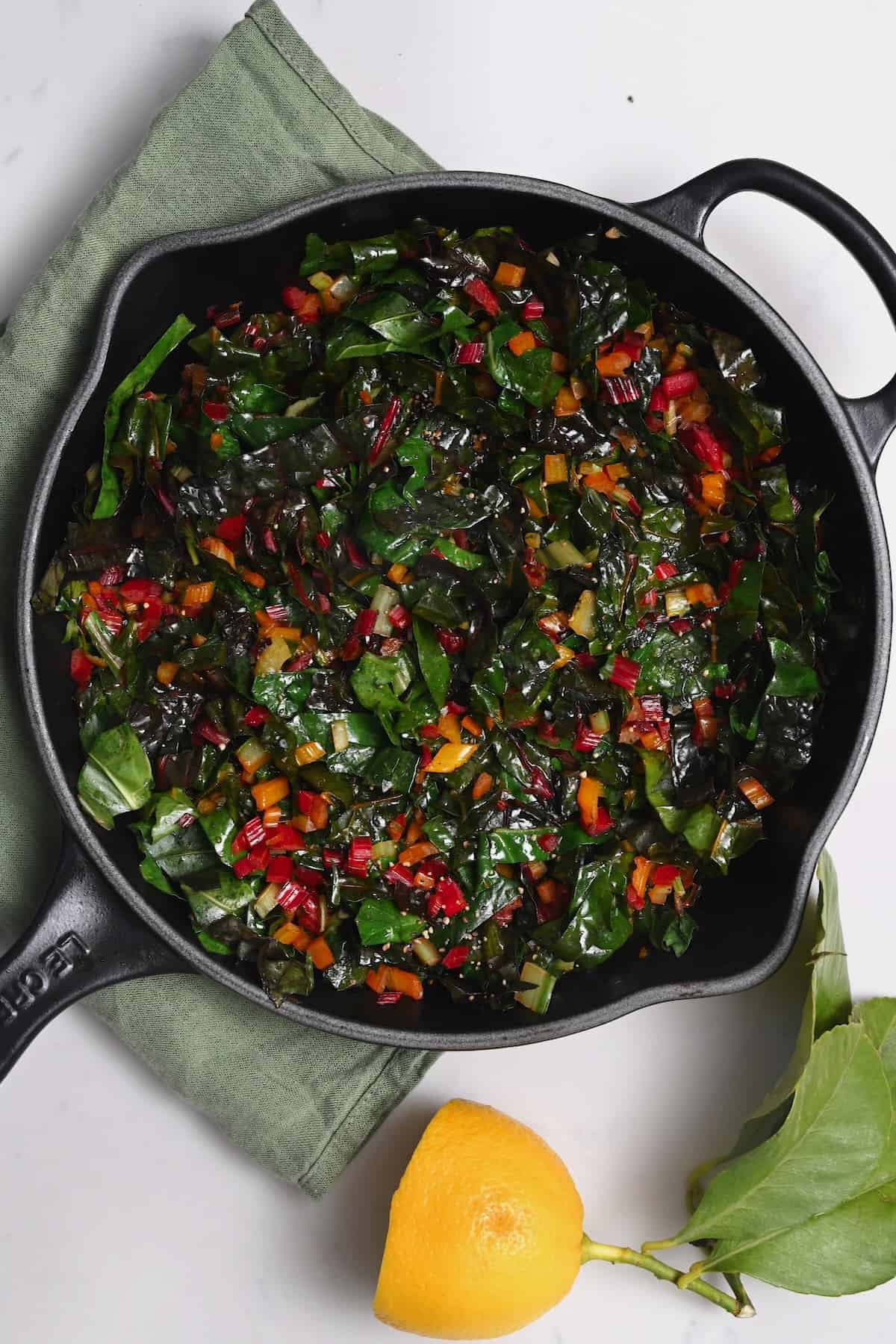
Swiss chard vs rainbow chard
When it comes to flavor and nutritional content, Swiss chard and rainbow chard have similar profiles. As you might guess, the key difference between these varieties of chard is their color. Rainbow chard stems come in a variety of colors, including red, orange, and pink. The traditional chard – as is more commonly used for recipes with Swiss chard – has greenish stems.
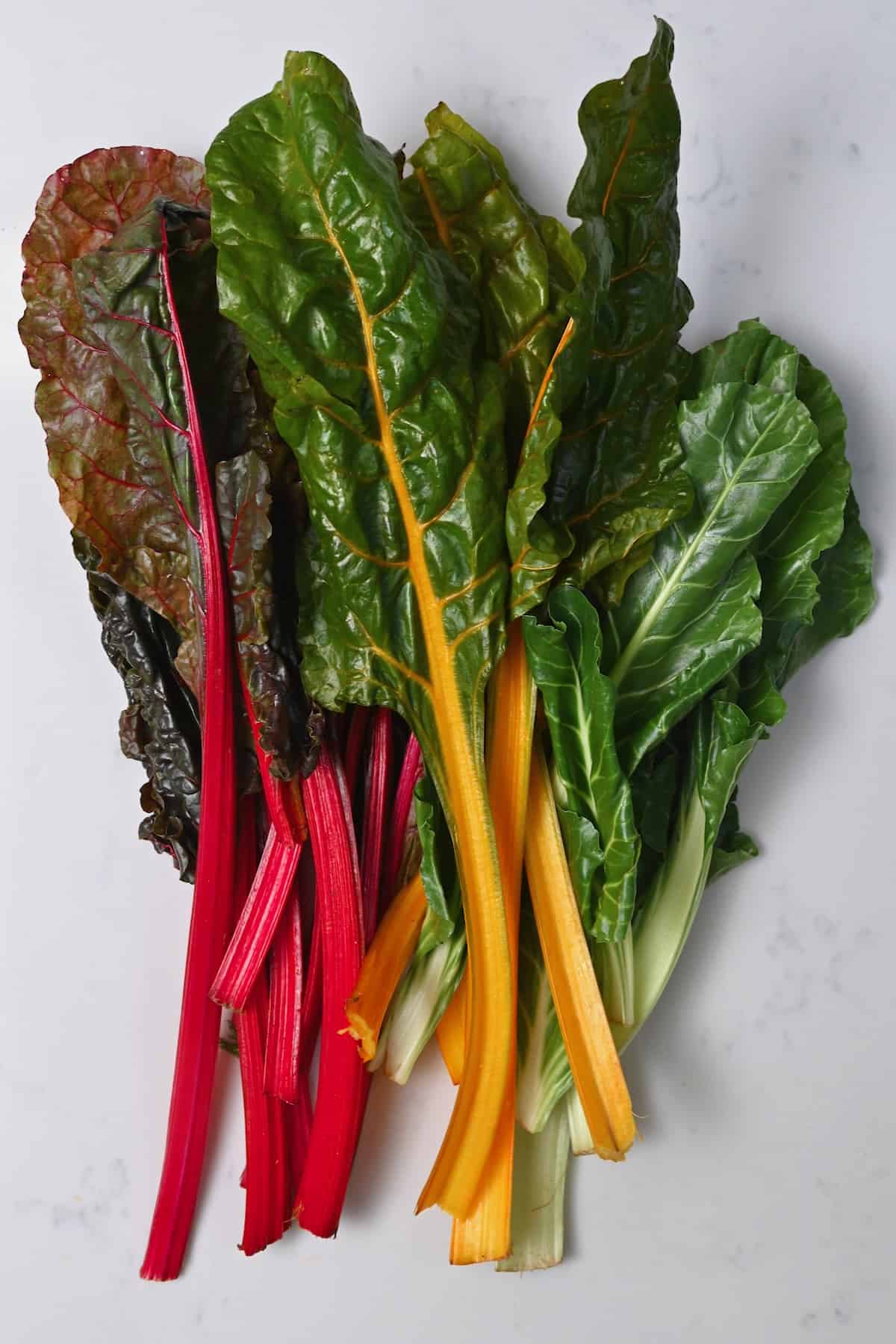
You can also get chard that’s exclusively pink – alternatively known as “rhubarb chard”. It would be used for a red chard recipe. Thankfully, there’s no wrong way how to eat swiss chard!
Watch how to make it
Sautéed chard ingredients
- Swiss chard: For my recipe for Swiss chard, I’m using a mix of traditional and Rainbow chard. However, you can use entirely one of either variety if you prefer.
- Olive oil: You can use vegetable, sunflower, or canola oil if you prefer, or even coconut oil. It might just change the time spent sautéing this recipe, so keep an eye on your pan.
- Lemon juice: If you don’t have lemon, you can use lime juice. Or, as a last resort, orange juice or vinegar. You want the acidic flavor of the lemon, but not to overwhelm the overall taste.
- Salt and pepper: You can also add other seasonings if you prefer. Try it with coriander, balsamic vinegar, crushed peppers, or red pepper flakes.
- Optional add-ins: To make a garlicky swiss chard, add some thinly sliced garlic. Alternatively, add onions or top the dish with parmesan cheese or pine nuts.
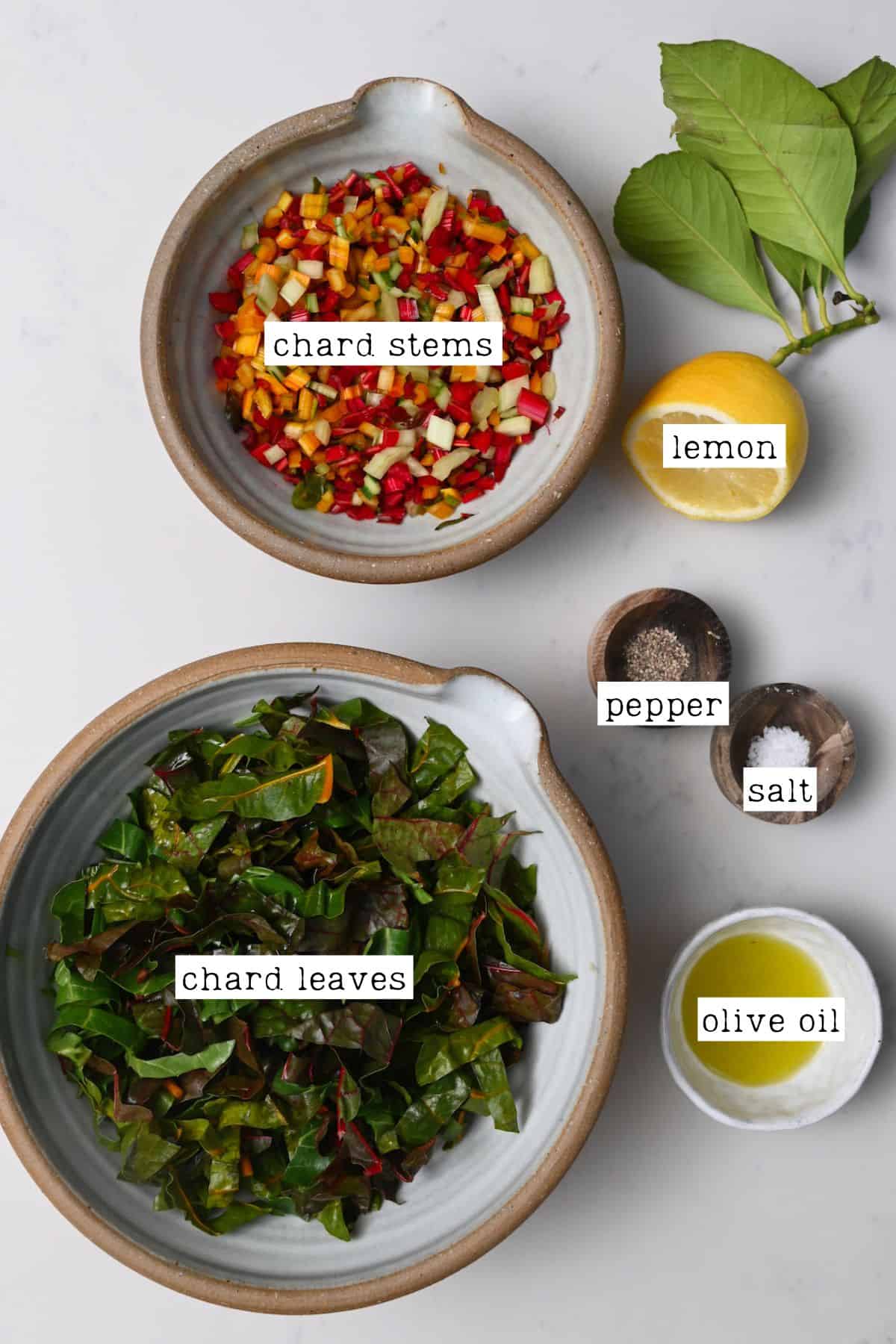
How to prepare Swiss chard
As you need to do in all Swiss chard recipes, you should wash the veggies first. Rinse the leaves and stalks thoroughly under running water. Use a salad spinner or a kitchen towel to pat them dry.
Remove the stems from the leaves by slicing down either side of the stem. Cut them into thin slices (about ¼ inch). Also, roughly chop the Swiss chard leaves – it’ll make cooking Swiss chard much quicker.
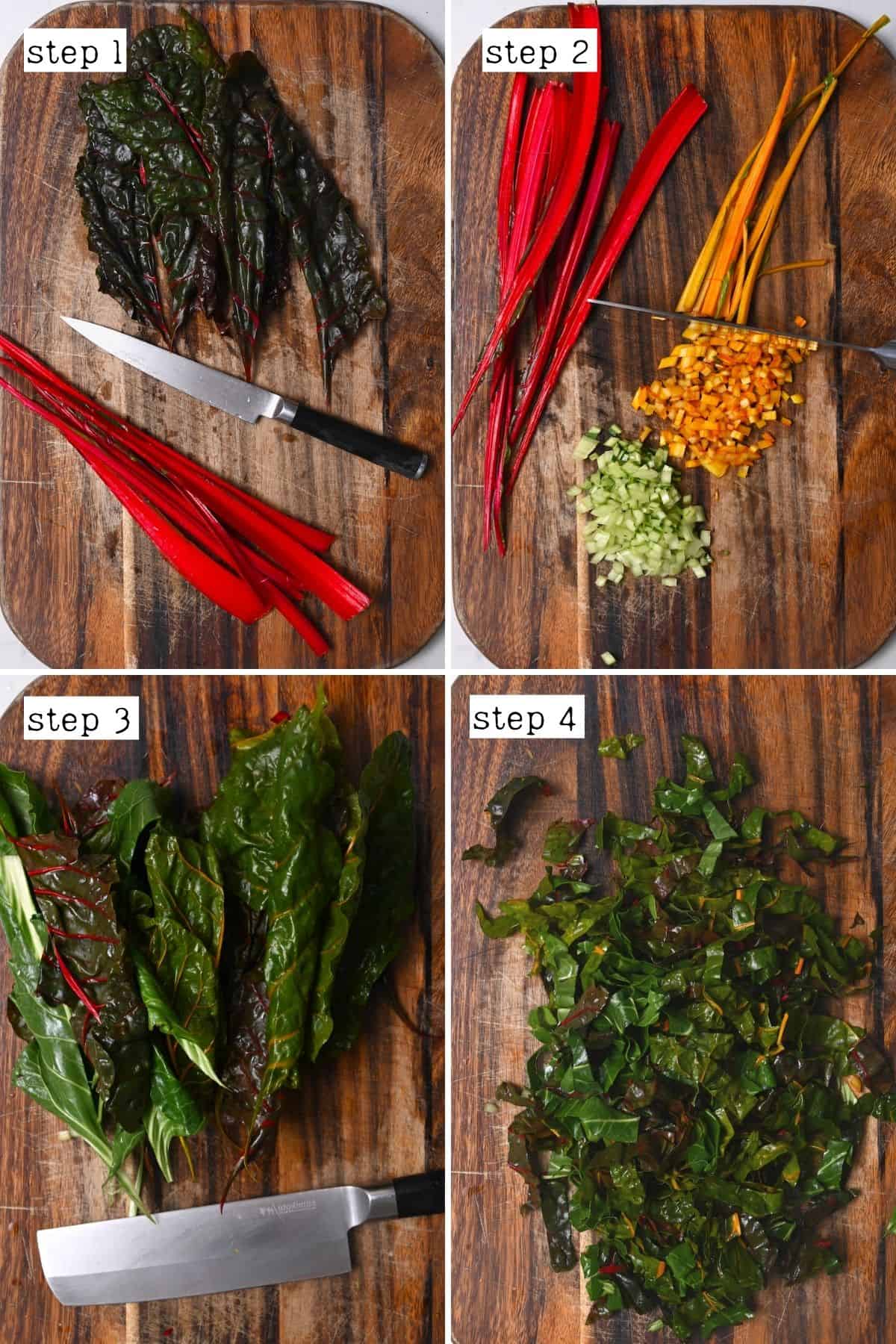
How to cook Swiss chard
For this simple Swiss chard recipe, heat the olive oil in a large skillet over medium heat. Put the Swiss chard stems in and let them cook for 1-2 minutes until they’re tender.
Then, add in the chopped leaves, salt, and pepper. Keep stirring for another 1-2 minutes until the leaves soften and become wilted.
Switch off the heat, add a drizzle of lemon juice, and stir everything together. Taste and adjust the seasoning before serving the Swiss chard recipe. Enjoy!
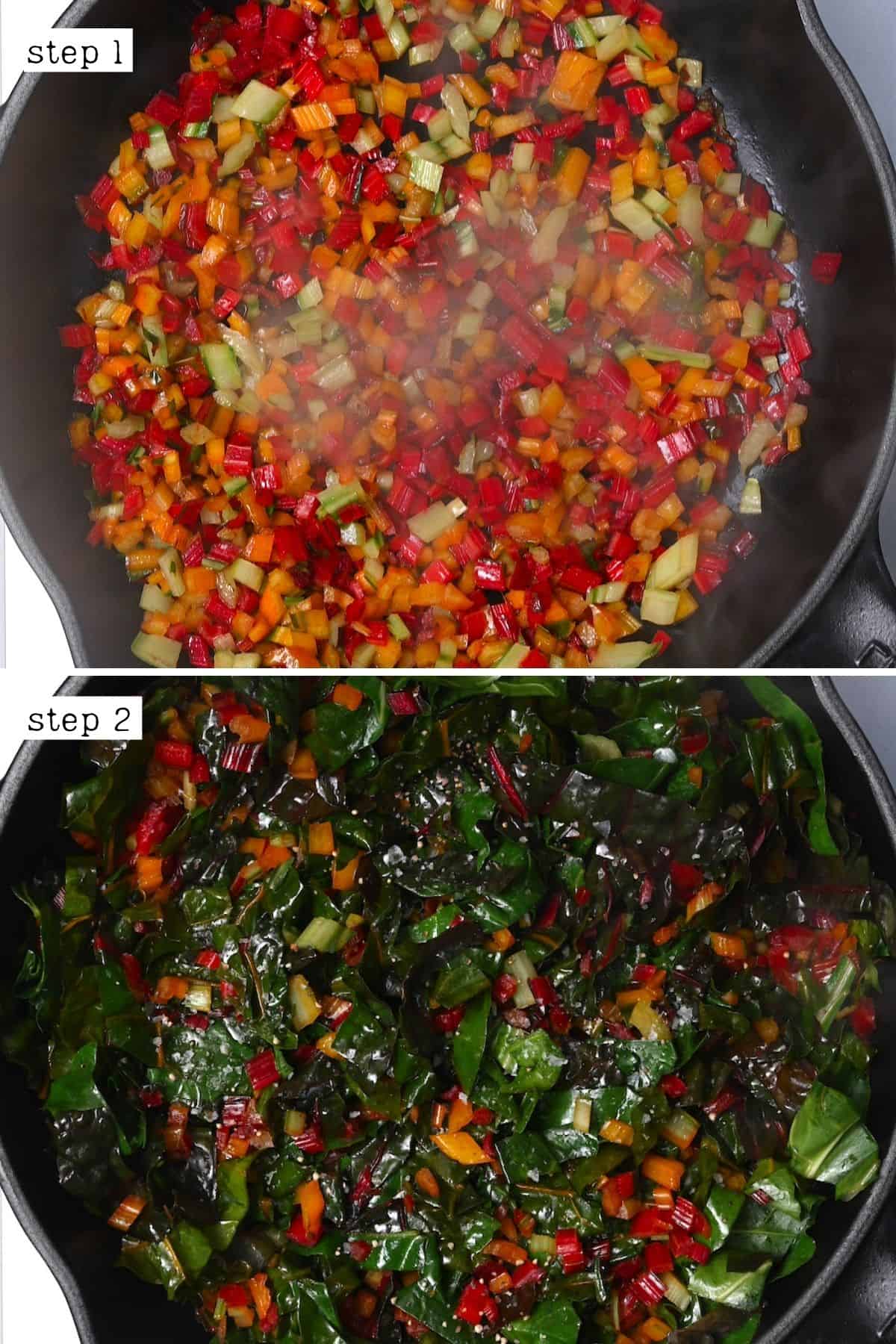
FAQs
Yes – a lot of recipes for Swiss chard will incorporate both the stems and leaves.
They’re also frequently used as a substitute for celery or asparagus as the texture is similar. The stems are usually sliced thin or diced. They’re usually a bit tough, so they’re great for sautéing or roasting.
Yes. If you’re wondering what to do with Swiss chard leftovers – or pieces that are about to go bad – first blanch the leaves and stems. Then freeze them in an airtight container.
It should keep, if stored properly, for up to six months.
More tasty Swiss chard recipes
If you try this simple sautéed Swiss chard recipe, let me know how it goes in the comments below. I’d appreciate a recipe card rating and would love to see your recipe recreations – tag me on Instagram @Alphafoodie!
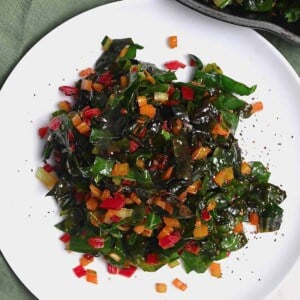
Simple Sautéed Swiss Chard
Ingredients
- 13 oz chard 1 small bunch Swiss chard or Rainbow chard (or mix), leaves and stems
- 2 Tbsp olive oil
- 2 Tbsp lemon juice from 1/2 lemon
- 1/4 tsp salt
- 1/8 tsp black pepper
Instructions
- Rinse the leaves and stalks thoroughly under running water. Use a salad spinner or a kitchen towel to pat them dry.
- Remove the stems from the leaves by slicing down either side of the stem. Cut them into thin slices (about ¼ inch). Roughly chop the Swiss chard leaves.

- Heat the olive oil in a large skillet over medium heat. Put the chopped stems in and let them cook for 1-2 minutes until they’re tender.
- Add in the chopped leaves, salt, and pepper. Keep stirring for another 1-2 minutes until the leaves soften and become wilted.
- Switch off the heat, add a drizzle of lemon juice, and stir everything together. Taste and adjust the seasoning before serving!
Storage Information
- Keep in an air-tight container in the fridge for 3-4 days. You can also freeze it for up to 3 moths.
Video
Notes
- Optional add-ins: you can add some thinly sliced garlic or onions when cooking the chard. You can serve the dish with parmesan cheese or pine nuts.
Nutrition
Nutrition information is automatically calculated, so should only be used as an approximation.

